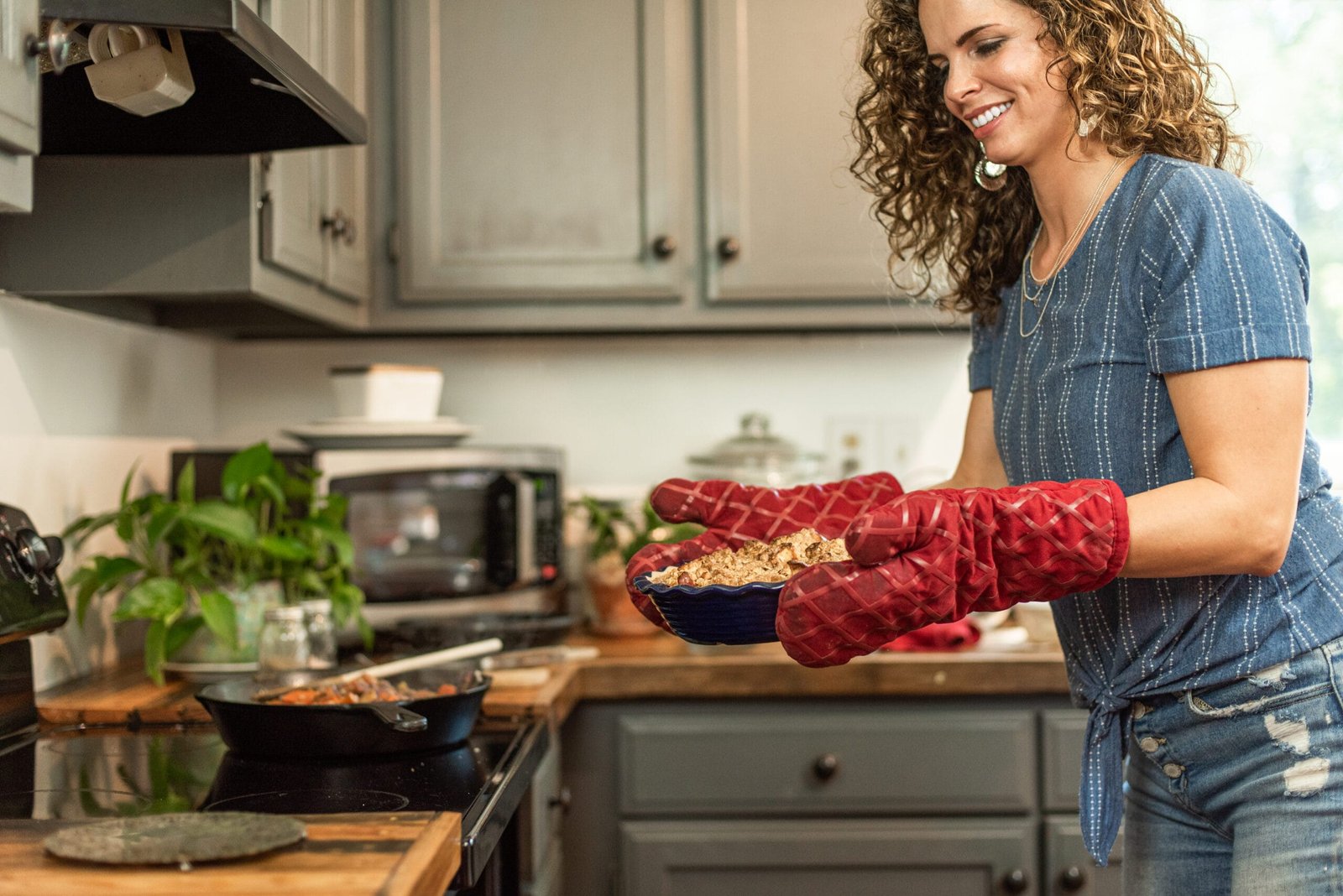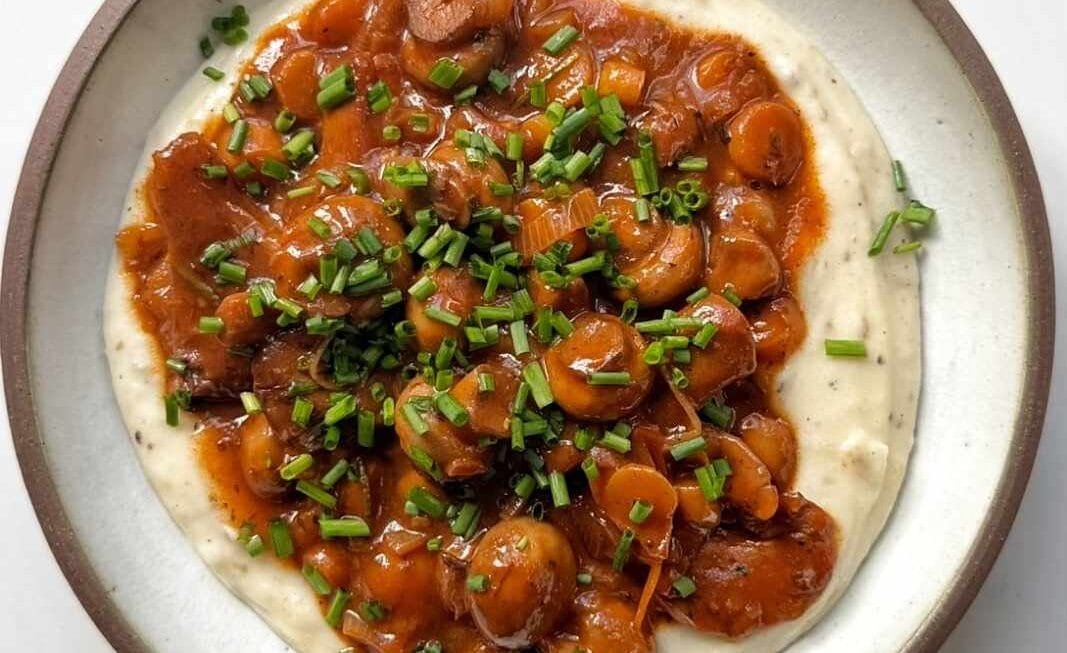Learn what real food is, why it’s important, and how to eat healthy on a budget. This beginner’s guide helps you save money while eating real food.
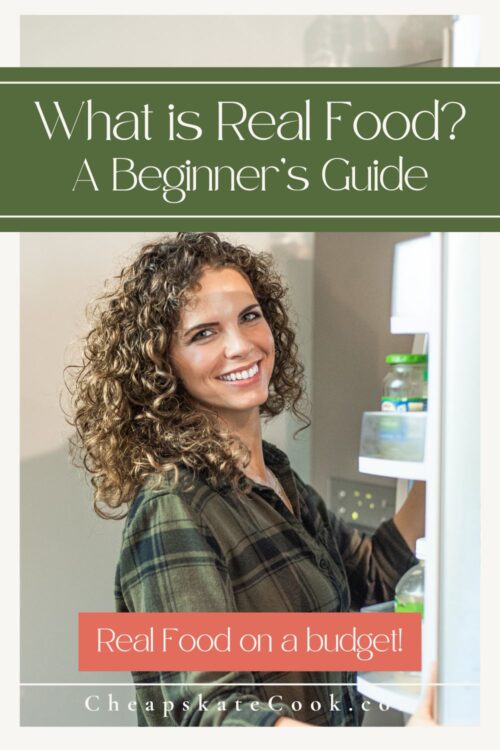
This is a fun one.
The internet is full of conflicting advice about what to eat and what not to eat. It’s overwhelming and confusing. Who even knows how to eat healthy anymore? Should I be vegan, carnivore, gluten-free, or only eat organic food?
This week, let’s go back to the basics.
What is “Real Food”?
Real food doesn’t mean you’re following a specific diet like Whole30 or Keto. It doesn’t mean you’re gluten-free, vegan, or eating only organic food.
When we talk about “real food,” or “whole food,” we’re referring to food that’s as close to its natural state as possible. Think about fruits, vegetables, whole grains, nuts, seeds, and proteins like beans, eggs, and meat — all of which haven’t been overly processed or packed with artificial additives.
And here’s my obligatory disclaimer: The information found here is for educational and inspirational purposes only. It does not provide medical advice. Reliance on any information provided here is solely at your own risk. For more information please read our Disclaimer.
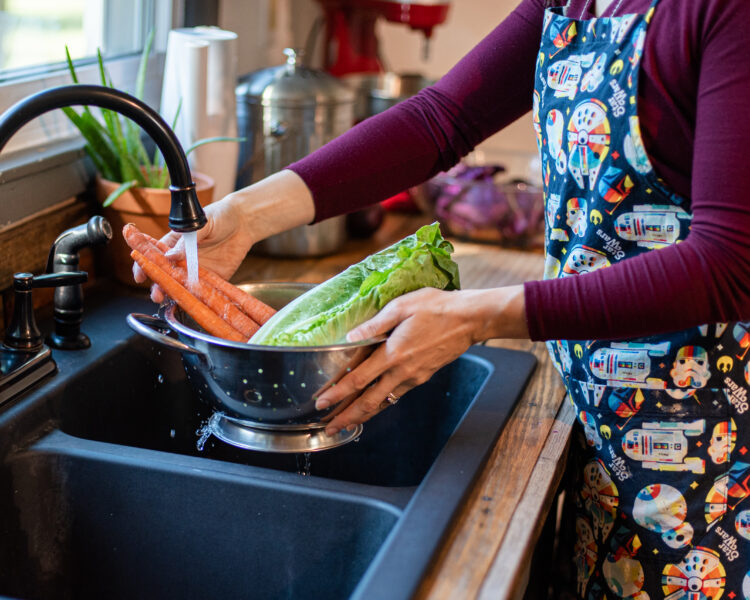
Real Food vs. Processed Food: What’s the Difference?
On the other hand, processed foods include sugary snacks, frozen dinners, and boxed meals. These foods often contain added sugars, unhealthy fats, and chemicals that our bodies don’t need.
Keep in mind that there’s a lot of gray area here. Technically, any food you alter from its original state has been processed in some way. That includes basic foods like cooking an egg or turning milk into yogurt or butter. But that’s not what I mean by “processed foods.”
Think about it this way: if you can make it in your home kitchen with basic tools, or it’s a food that people have been eating for thousands of years (think yogurt, sourdough bread, butter, cheese, and some fermented foods and drinks), that’s a “whole food.”
For most of human history, people ate foods from farms, not factories — and that’s the general standard I use for healthy eating.
Why Should You Eat More Real Food?
Real food is packed with nutrients – vitamins, minerals, fiber, and healthy fats – that help keep our bodies strong and our minds sharp. When you eat more whole food, you’re giving your body what it needs to work better.
Eating real food can also mean more energy throughout the day and a better mood overall. It’s not about a perfect diet—it’s about making small, consistent changes.

The 80/20 Rule: A Simple Approach to Eating Healthy
Personally, I don’t label any food “good” or “bad.” Most nutrition experts agree that labeling food like that leads to an unhealthy relationship with food. Instead, I’m not afraid to eat Oreos or a bag of my favorite chips (Cheetos, if you want to know – does that count as a chip?). Instead, I mostly feed my body with food that I know fuels it well. Processed food doesn’t fuel me well, so I eat less of that.
Try the 80/20 rule: aim for 80% of your food to be healthy food. Reserve the remaining 20% for parties, treats, your very favorite processed snacks, etc.
Can Healthy Eating Be Affordable? Yes! Here’s How:
We’ve been led to believe that healthy eating is expensive. At first glance, that might seem true — like when you compare the price of a bag of crackers to a tub of yogurt.
But that’s not the case. Processed food is overpriced, devoid of nutrients, and doesn’t keep you full or fuel your body the way whole food does.
Remember that $5 bag of chips that’s only half or a third of the way full when you open it? It’s probably made of potatoes or corn: both super cheap ingredients. Depending on where you live, five dollars will buy you multiple pounds of potatoes.
Do chips make a fun snack? Absolutely. But they aren’t cheap.
Snack companies have sold us the idea that cooking from scratch is complicated and overrated.
But I did the math.
A bag of chips isn’t cheaper than a piece of fruit.
While healthy eating can cost plenty of money and time, I assume you are reading this post because you want to find ways to save time and money while eating healthy. I can help you with that.
Sitting in the drive-thru for 30 minutes is more expensive and time-consuming than spending 30 minutes making a simple dinner at home. (Too tired to cook? Don’t worry — I’ve got solutions for that too.)
If you want to dive into my grocery savings and grocery hauls (real food examples in real life!), go here.
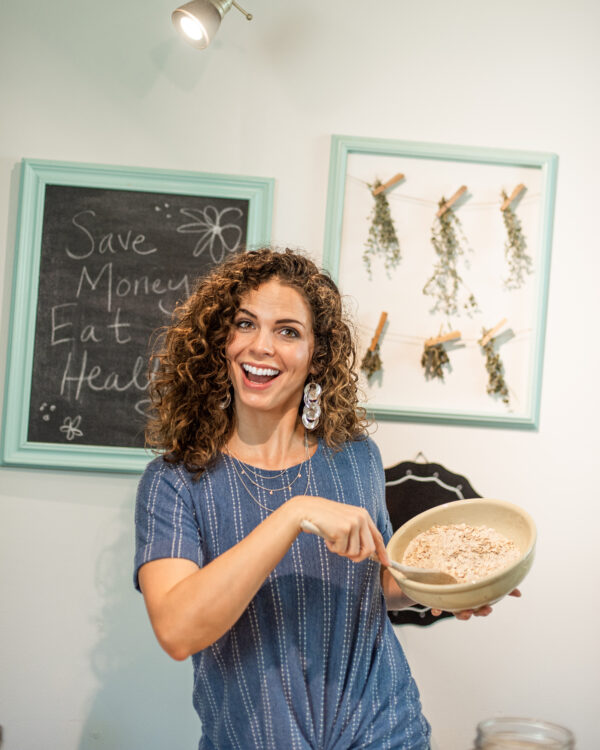
How to Start Eating More Real Food Today
Make a list of your favorite “real foods.” Remember the definition of real food. These kinds of foods should make up about 80% of your diet.
Here are a few of my favorite real foods:
- Berries
- Oatmeal
- Bread (homemade, sourdough, whatever)
- Sweet potatoes
- Apples
- Bananas
- Chicken
- Ground beef
- Steak
- Salmon
- Shrimp
- Butter
- Eggs
- Seasoned beans (like these Intant Pot cumin beans)
- Cheese (all kinds)
- Yogurt
- Seasoned rice (like this Yellow Mediterranean Rice)
- Asparagus
- Cashews
- Cucumbers
- Olives
- Peppers
What kinds of meals can you make with your favorite real foods?
Here are a few ideas using my list:
- Baked Oatmeal with yogurt and berries (oats, berries, yogurt)
- Overnight Oats (oats, berries, yogurt)
- Greek Quinoa Salad (cucumbers, olives, peppers)
- Frittata with steamed asparagus (eggs, sweet potatoes, asparagus)
- Cumin Beans & Cornbread (seasoned beans, bread)
- Burrito Bowls (chicken, beef, steak, or shrimp, seasoned beans, cheese)
- Ticked vegetarian (seasoned beans, cheese)
- Egg & Cheese Muffins (eggs, cheese)
- White Bean Chili (seasoned beans, chicken)
- Scrambled eggs with sourdough toast and berries or a salad (eggs, bread, berries, cucumbers, peppers)
- Soup (all kinds of my favorite real food and flavors!)
These are just a few examples of real food meals. Find tons of simple, budget-friendly, real food recipes here.
Obviously, some of these meals are more expensive than others. When I’m trying to save money and eat healthy, I lean into the cheaper meals and cheaper real foods. I reserve the more expensive real foods for special occasions or I use them sparingly.
Now, make another list of your favorite processed food. These kinds of foods might belong in that 20%.
Here are a few of my favorite processed foods:
- Cheetos
- Crackers (all kinds)
- Oreos
- Ben & Jerry’s Ice Cream
- Nutella
- Kraft Macaroni & Cheese
I eat these without guilt, and I enjoy them every time. Life is about balance.
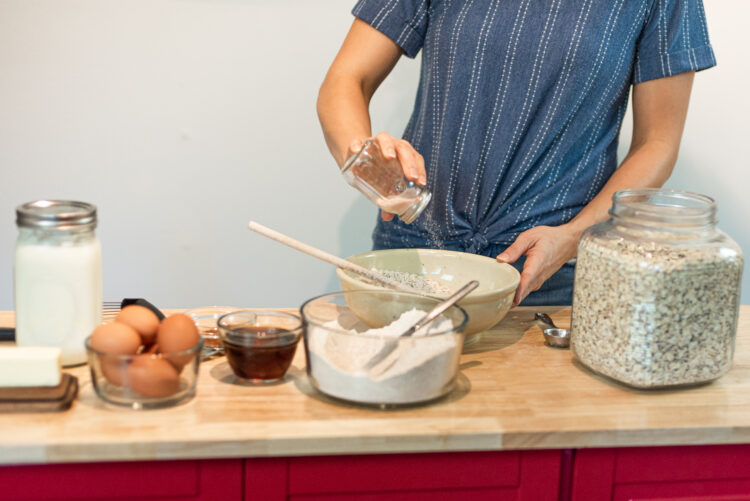
Why Should You Choose Real Food Over Processed Food?
Let’s review:
“Real food,” is food that is as close to its natural state as possible – like fruits, vegetables, whole grains, nuts, seeds, and proteins like beans, eggs, and meat. Meanwhile, processed foods are things like sugary snacks, frozen dinners, and boxed meals. They often have added sugars, unhealthy fats, and chemicals that our bodies don’t need. We’ve been sold the lie that real food is more expensive than processed food, but that simply isn’t true.
Want to learn more about saving money and eating healthy in bite-sized pieces? Join my newsletter.

